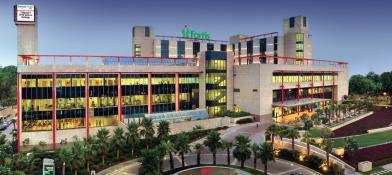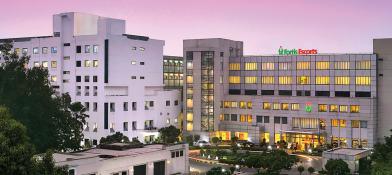Upper Endoscopy
Overview
Upper endoscopy is an advanced procedure to examine the upper part of the digestive tract. The upper digestive tract encompasses the esophagus, stomach, and duodenum. The esophagus is the tube that collects food from the mouth to the stomach, and the duodenum is a small tube that is an upper part of the small intestine. Hence, it is also called esophagogastroduodenoscopy or EGD. Any defects in the upper part are examined to diagnose and treat the diseases affecting the upper digestive tract.
Technique
EGD uses a small camera called the endoscope attached to a thin hollow tube. This camera helps to visualize the inner structures. EGD can be used to inspect, diagnose, and treat the condition. It can also be combined with X-rays and ultrasound. Endoscopy can be combined with ultrasound to create images of the upper digestive tract. This can also be used to reach not-so-accessible areas like the pancreas. High-definition videos have been used to provide clearer images using newer endoscopes.
Types
Image-enhanced endoscopy includes two advanced techniques. They are:
- Dye-based techniques: Lugol’s iodine is used to detect abnormalities in the upper digestive tract. It stains the normal tissue blue, and abnormal tissue appears pink.
- Equipment-based technique: Narrow-band imaging is a sensitive and more accurate procedure that can detect early cancers of the upper digestive tract by examining the blood vessels. This shows affected areas as brown discolorations.
Indications
Healthcare providers (HCP) may recommend an endoscopy to investigate the cause of the symptoms, diagnose the disease by collecting tissue samples, and treat the digestive tract issues. Clinical symptoms that use EGD for investigation are:
- Heartburn
- Nausea and vomiting
- Abdominal pain
- Swallowing difficulty
- Bleeding from the gastrointestinal tract
- Severe weight loss
Diagnostic diseases that use EGD include
- Acid reflux disease called Gastroesophageal reflux disease
- Cancers and tumors
- Inflammation of the gastrointestinal tract called esophagitis, gastritis, and duodenitis
- Immune diseases like celiac and Crohn’s diseases
- Ulcers occurring in the stomach or any part of the upper digestive tract
- Swallowing disorders
It can also be used to treat certain conditions, like
- Upper digestive tract bleeding
- Opening of the narrow digestive tracts
- Removal of foreign objects
- Removal of any polyps or tumors
Advantages
- It is a first-line tool that is used for upper gastric conditions
- It can be used to visualize, diagnose, and treat the conditions
- Has more accuracy than X-rays in diagnosing a condition
- It gives a direct view of the digestive tract
Before the procedure
Before upper endoscopy, an individual has to discuss the importance of the procedure with the HCP. An individual has to give complete details of the medical history, medications, or any history of previous surgeries. Diet will be restricted and a list of medicines to be stopped will be provided. Premedication that help to increase visualization with endoscopy are given before the procedure. The endoscopy will be done on an empty stomach. Hence, it is necessary to refrain from eating anything 8-12 hours before the procedure and stop taking fluids at least 4 hours before.
During the procedure
An individual is made to lie on the back or the side of the table. Medicine called a sedative is given that relaxes the individual during endoscopy. Local anesthesia is sprayed in the mouth before sending the endoscope. Breathing, blood pressure, and heart rate are evaluated by attaching monitors to the body.
The mouth is kept open by a plastic mouth guard. One has to swallow the scope and pass it down the throat. As the endoscope travels through the esophagus, images are sent to the monitor for visualization. Sometimes, air pressure will be given to inflate the esophagus for easy examination of the digestive tract. At least 7-8 minutes is necessary for upper digestive tract examination using an endoscope.
The images produced on the monitor are used to guide the special surgical tools to collect a tissue sample or remove polyp. After the required procedure is done, the endoscope is retracted from the mouth. The entire procedure is completed in 15-30 minutes.
After the procedure
An individual is made to rest for some time after the procedure and monitored till the vitals stabilize and the sedative wears off. Endoscopy does not cause any pain except for mild discomfort during the procedure. Medications for pain and to ward off infection will be given if any tissue is removed during the endoscopy procedure.
Interpretation:
The interpretation of the report or results depends on the purpose for which the endoscopy is done. If it is done to diagnose by inspection, then the cause of symptoms will be known. It is done to take some tissue for biopsy then the pathology report will be given stating the diagnosis of the condition.
Side effects
Bloating, gassiness, cramping, and sore throat are some of the symptoms of the procedure. These symptoms will subside after some time.
Risks and complications
The associated risks and complications with this procedure include:
- Bleeding complications due to the removal of tissue from the digestive tract.
- Risk of infections due to retrieval of the tissues that can be subsided by using antibiotics
- A rare complication of tears in the gastrointestinal tract, which may require additional surgery to repair it
- Allergic reactions to anesthesia
- Any symptoms of fever, chest pain, breathing difficulties, blood in stools or dark-colored stools, swallowing difficulties, persistent abdominal pain, and severe vomiting should be considered as symptoms due to underlying complications and should be immediately addressed.
Conclusion
Upper endoscopy is an important procedure for detecting and diagnosing various diseases of the upper digestive tract. It is a first-line tool for investigating symptoms of the upper digestive tract. It is a low-risk procedure for detecting digestive tract problems.






























